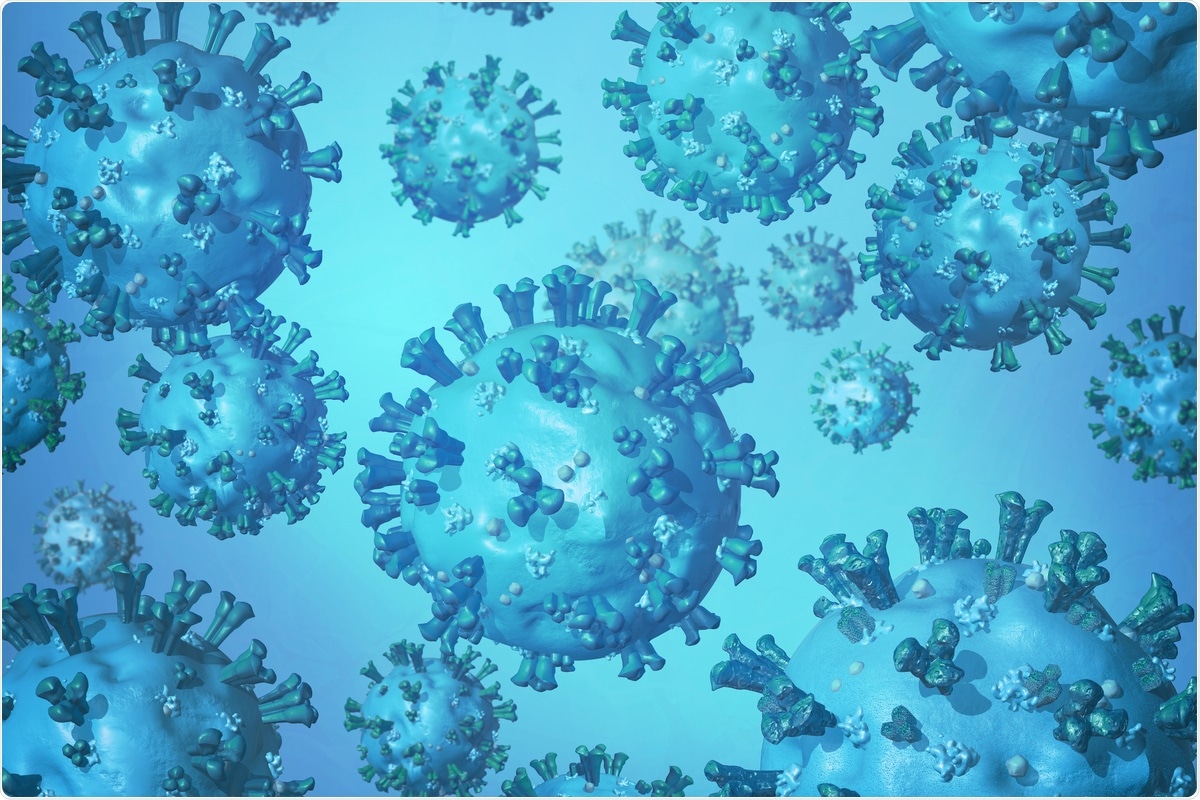Scientists develop a cell-free assay to screen SARS-CoV-2 entry inhibitors
In a study conducted at the Israel Institute of Technology (Technion), Israel, scientists have developed and validated a cell-free fluorescence assay for the rapid screening of protein inhibitors. They have mainly focused on candidate inhibitors that block the interaction between spike receptor-binding domain (RBD) of severe acute respiratory syndrome coronavirus 2 (SARS-CoV-2) and human angiotensin-converting enzyme 2 (hACE2).
 Study: A cell-free assay for rapid screening of inhibitors of hACE2-receptor – SARS-CoV-2-Spike binding. Image Credit: Dana.S/ Shutterstock
Study: A cell-free assay for rapid screening of inhibitors of hACE2-receptor – SARS-CoV-2-Spike binding. Image Credit: Dana.S/ Shutterstock
A preprint version of the study is available on the bioRxiv* server while the article undergoes peer review.
Background
SARS-CoV-2, the causative pathogen of coronavirus disease 2019 (COVID-19), is an enveloped, single-stranded, positive-sense RNA virus that primarily attacks ACE2-expressing epithelial cells of the human respiratory tract. The viral host cell entry is mediated by the interaction between host cell membrane receptor ACE2 and viral spike RBD, followed by fusion of the viral envelope with the host cell membrane. Thus, small molecule inhibitors that block this interaction can serve as potential therapeutic agents to prevent SARS-CoV-2 infection.
In the current study, the scientists have developed a cell-free fluorescence assay that can be used to screen candidate inhibitors of ACE2 – RBD interaction.
The assay
The assay includes RBD-coated fluorescent polystyrene particles that capture fluorescently labeled hACE2 in the absence of an inhibitor. When incubated with an inhibitor, no interaction occurs between RBD and ACE2. This results in the reduction of fluorescent signals that can be detected using flow cytometry or fluorescence microscopy. The scientists have covalently coated fluorescent particles with RBD to generate virion-like particles.
Assay validation
The scientists conducted in vitro experiments to validate the specificity of RBD-coated particles (virion particles) binding to hACE2. The findings revealed that virion-like particles bind specifically to hACE2 and not to the fluorescent tag (mCherry) used in the study.
The experiments they conducted to determine the assay's sensitivity and duration revealed that virion-like particles have high sensitivity even for a small amount of hACE2. However, a higher concentration of hACE2 provided more sensitivity for virion-like particles. Moreover, they estimated that the optimal reaction time for RBD – ACE2 binding is 45 minutes.
The fluorescent signal they obtained in the assay was a bimodal or digital signal. There was no analog shift of the virion-like particles from non-fluorescence to full-fluorescence values. This indicates cooperative binding between virion-like particles and hACE2. As suggested by the scientists, this cooperativity could be because of conformational changes inbound hACE2 that cause stronger interaction with other hACE2 molecules.
They validated the functionality of the assay by conducting the binding reaction in the presence and absence of a synthetic anti-RBD peptide. The findings showed a continuous dose-dependent reduction in RBD – hACE2 binding in the presence of the synthetic inhibitor. This indicates that the assay can be used to analyze RBD – hACE2 inhibition quantitively.
Interaction between viral particles and RNA – protein granules
In a separate set of experiments, the scientists explored the binding affinity of virion-like particles for synthetic RNA – protein granules that are expected to reduce the amount of active viral particles. The RNA part of the granules was composed of synthetic long non-coding RNA, and the protein part was composed of hACE2. These granules were produced in vitro through self-assembly.
Mechanistically, the long non-coding RNA contains multiple binding sites for hACE2 and thus, increases the local concentration of hACE2. This, in turn, facilitates the entrapment of viral particles, highlighting the potential of RNA – protein granules as anti-SARS-CoV-2 therapeutic agents.
The assay findings revealed that virion-like particles bind to hACE2-coated RNA granules with high selectivity and specificity. This finding confirms the anti-SARS-CoV-2 activity of RNA – protein granules.
Study significance
The cell-free fluorescence assay developed in the study can be used to rapidly and cost-effectively screen SARS-CoV-2 entry inhibitors without requiring high biosafety level laboratory setups. The assay application could be extended to assess the interactions between RBD mutants and hACE2 or other host cell receptors.
*Important notice
bioRxiv publishes preliminary scientific reports that are not peer-reviewed and, therefore, should not be regarded as conclusive, guide clinical practice/health-related behavior, or treated as established information.
- Kikuchi N. 2021. A cell-free assay for rapid screening of inhibitors of hACE2-receptor – SARS-CoV-2-Spike binding. bioRxiv. doi: https://www.biorxiv.org/content/10.1101/2021.10.06.462907v1
Posted in: Medical Science News | Medical Research News | Disease/Infection News
Tags: ACE2, Angiotensin, Angiotensin-Converting Enzyme 2, Assay, binding affinity, Cell, Cell Membrane, Coronavirus, Coronavirus Disease COVID-19, Cytometry, Enzyme, Flow Cytometry, Fluorescence, Fluorescence Microscopy, in vitro, Laboratory, Membrane, Microscopy, Molecule, Pathogen, Protein, Receptor, Respiratory, RNA, SARS, SARS-CoV-2, Severe Acute Respiratory, Severe Acute Respiratory Syndrome, Syndrome, Virus

Written by
Dr. Sanchari Sinha Dutta
Dr. Sanchari Sinha Dutta is a science communicator who believes in spreading the power of science in every corner of the world. She has a Bachelor of Science (B.Sc.) degree and a Master's of Science (M.Sc.) in biology and human physiology. Following her Master's degree, Sanchari went on to study a Ph.D. in human physiology. She has authored more than 10 original research articles, all of which have been published in world renowned international journals.
Source: Read Full Article
